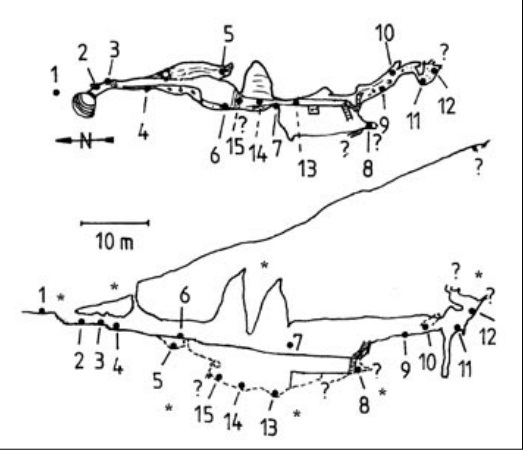Faunal Dynamics in the Železna Jama Cave
DOI:
https://doi.org/10.3986/ac.v33i2.303Abstract
V letih 2000-2001 smo raziskovali favno in ekološke razmere v Železni jami pri Dobu. V jami smo našli 53 vrst, dominantne so bile: Meta menardi, Amilenus auriantiacus, Troglophilus neglectus, T. cavicola, Laemosthenes schreibersi, Ceuthmonocharis robici, Limonia nubeculosa in nedoločena vrsta foride. Troglomorfozni taksoni so bili Zospeum sp., C. robici, Anophthalmus sp. in nekateri drugi. Poleg sezonskih sprememb v lokalni klimi in klimi jame so spremembe jakosti prepiha ter količina organskih snovi v substratu v posameznih delih jame verjetno poglavitni vzroki za intenzivne migracije favne. Živali so migrirale med jamo ter površjem, sistemi špranj ob jami in vodnim rovom ob dnu jame.
In 2000-2001, the fauna of and ecological conditions in the Železna jama cave near Dob in the isolated karst area of Domžale-Moravče (east of the town of Domžale, central Slovenia), were investigated. Fifty-three species were found in the cave, the dominant ones being Meta menardi, Amilenus auriantiacus, Troglophilus neglectus, T. cavicola, Laemosthenes schreibersi, Ceuthmonocharis robici, Limonia nubeculosa and an undetermined phorid species. The troglomorphotic taxa found were: Zospeum sp., C. robici, Anophthalmus sp. among others. Besides seasonal changes in the local and the cave climate, changes in drought intensity and the varying quantities of organic matter in the substrate were probably the most important factors triggering migrations. Animals migrated between the cave and the surface, adjacent fissure systems and the water channel in the bottom of the cave, which is inaccessible to humans.
Downloads

Downloads
Published
How to Cite
Issue
Section
License
Authors guarantee that the work is their own original creation and does not infringe any statutory or common-law copyright or any proprietary right of any third party. In case of claims by third parties, authors commit their self to defend the interests of the publisher, and shall cover any potential costs.
More in: Submission chapter




